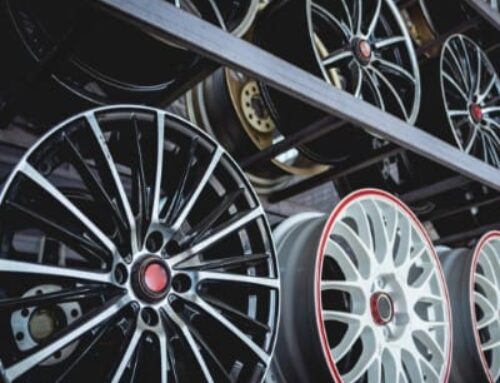What to Avoid When Buying Rims?
Buying new rims can dramatically change your vehicle’s look, handling, and performance, but it’s important to make an informed choice. Selecting the right rims isn’t just about aesthetics; there are practical factors to consider, like compatibility, material, and long-term maintenance. In this guide, we’ll cover what to avoid when buying rims to help you make a choice that enhances both your vehicle’s appearance and functionality.
1. Overlooking Vehicle Compatibility
One of the biggest mistakes to avoid when buying rims is ignoring compatibility with your vehicle. Not all rims fit all vehicles, and installing the wrong ones can affect performance, safety, and handling.
- Size Mismatch: Each vehicle has recommended rim sizes that match its design and performance needs. Installing rims that are too large or small can alter the ride quality and put extra strain on the suspension.
- Bolt Pattern: The bolt pattern varies across different makes and models, so ensure the rim’s bolt pattern matches your car’s. An incorrect bolt pattern means the rims simply won’t fit.
- Offset and Backspacing: These measurements determine how far the rim sits from the wheel well. Incorrect offset can result in poor handling and rubbing against other components.
Before buying, consult your vehicle’s manual or a professional to confirm the correct specifications.
2. Prioritizing Style Over Function
While stylish rims can enhance the look of your vehicle, functionality should come first. Oversized or flashy rims can look impressive, but they often bring unintended trade-offs:
- Fuel Efficiency: Larger and heavier rims require more power to move, which may reduce fuel efficiency.
- Increased Tire Wear: Bigger rims are often paired with lower-profile tires, which wear out faster and can be more prone to damage on rough roads.
- Ride Comfort and Handling: Heavier rims can make your ride stiffer and affect steering responsiveness, which might compromise the driving experience.
Evaluate the practicality of different designs for your lifestyle. For example, if you drive on rough terrain, durable and moderately sized rims may be better than delicate, oversized options.
3. Choosing the Wrong Rim Material
Different rim materials offer unique advantages, so it’s important to understand how each material will affect performance and durability.
- Steel Rims: These are durable and often more affordable but heavier, which can affect fuel efficiency and handling.
- Alloy Rims: Aluminum alloy rims are lightweight and offer better performance but may cost more. They’re an ideal choice for daily driving and offer improved fuel efficiency.
- Chrome Rims: Known for their aesthetic appeal, chrome rims require regular upkeep to prevent rusting. They’re less practical for harsh weather and rough terrain.
Each material has trade-offs, so choose a material that fits your driving habits and budget.
4. Ignoring Long-Term Maintenance Costs
When budgeting for new rims, don’t overlook maintenance. High-maintenance rims might look appealing initially but require more time, effort, and money in the long run.
- Polished or Chrome Finishes: While eye-catching, these finishes require regular cleaning and polishing to maintain their look. They’re prone to scratching and rusting if not cared for properly.
- Expensive Tires: High-end or custom rims often require specific tires, which may be pricier than standard tires.
- Wheel Alignment and Balancing: New rims may require alignment adjustments or balancing to ensure optimal performance and even wear, which adds to maintenance costs.
Before committing, factor in these long-term costs to ensure you’re not caught off guard by unexpected expenses.
5. Neglecting Weight Considerations
The weight of your rims can impact both performance and efficiency. Heavy rims can put more strain on your vehicle’s suspension, affecting handling, braking, and acceleration.
- Unsprung Weight: Rims add to the unsprung weight (the weight not supported by the suspension), and heavier rims can negatively affect road grip and fuel efficiency.
- Performance Impacts: In high-performance vehicles, lightweight rims allow for quicker acceleration and better handling. For daily drivers, moderate-weight rims strike a good balance between durability and performance.
Consider how the rim’s weight will impact your driving habits, especially if you prioritize performance or fuel economy.
6. Failing to Consider Safety Standards
Safety should be a top priority when purchasing rims, yet it’s often overlooked in favor of style or price. Avoid rims that don’t meet established safety standards.
- Certified Quality: Look for rims that meet safety certifications from reputable organizations. Certified rims have passed rigorous testing for durability and performance.
- Structural Integrity: Avoid used or poorly manufactured rims that may have cracks or other structural weaknesses. Damaged or low-quality rims are prone to failure and may endanger you on the road.
Always check for certification and quality marks to ensure the rims are safe for long-term use.
7. Choosing Based on Price Alone
While it’s tempting to go for cheaper options, buying inexpensive rims can lead to poor performance, reduced lifespan, and higher maintenance costs over time. Cheap rims often use lower-quality materials, making them prone to wear and damage.
- Low-Quality Materials: Cheap rims often use inferior materials that may not withstand regular driving conditions.
- Costly Repairs: Cheaper rims may be more susceptible to cracks or dents, which require frequent repairs or replacements.
- Hidden Costs: Inexpensive rims may require custom fittings or adjustments, adding unexpected costs to your budget.
Now that you know what to avoid when buying rims, it’s important to choose the right brand that fits your vehicle’s needs and personal style. For a deeper dive into the best rim brands available today, check out our article on What Brand Makes the Best Rims? and find out which brands offer the quality, performance, and style you’re looking for.






